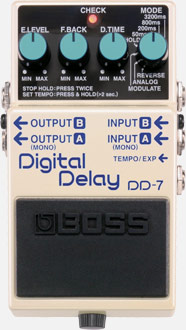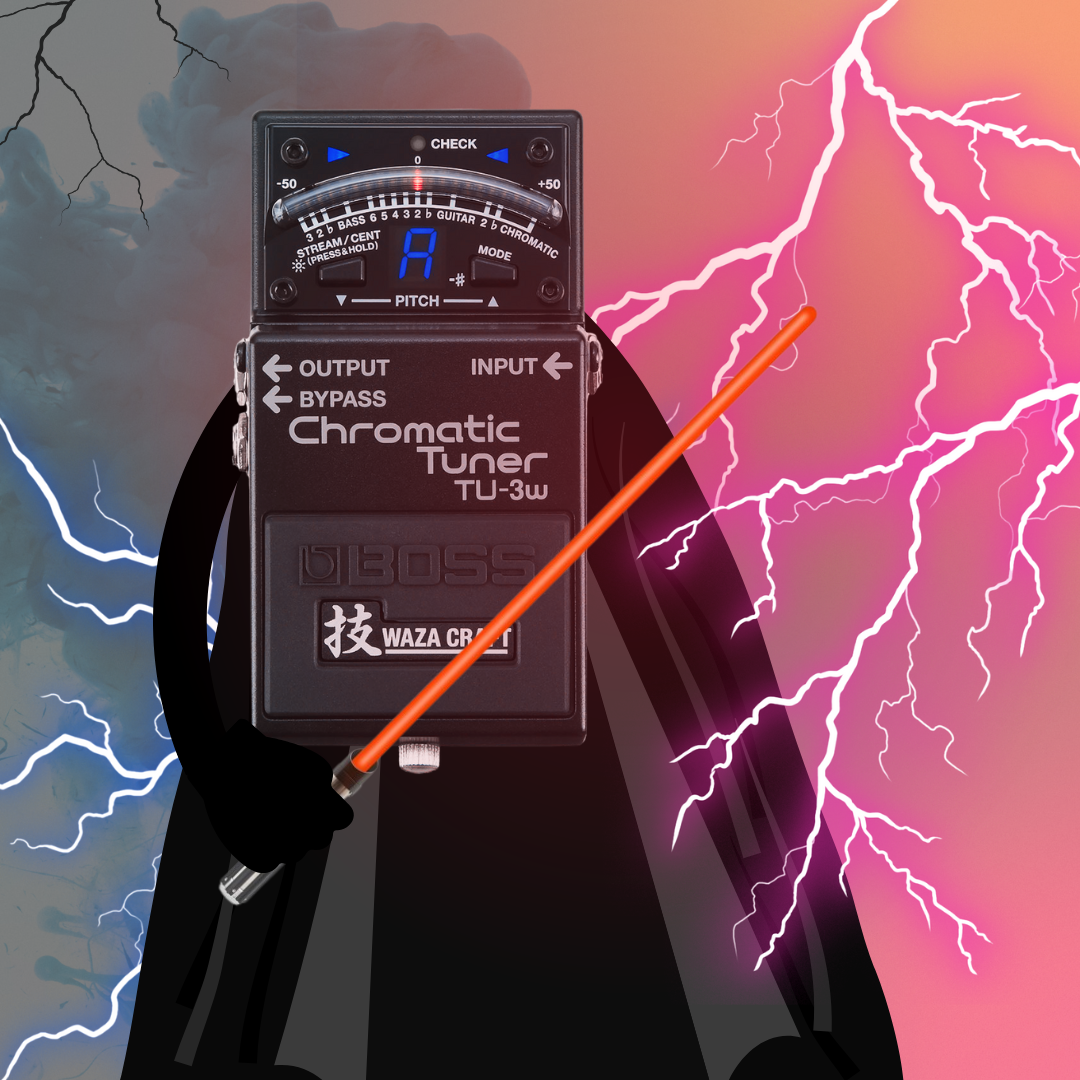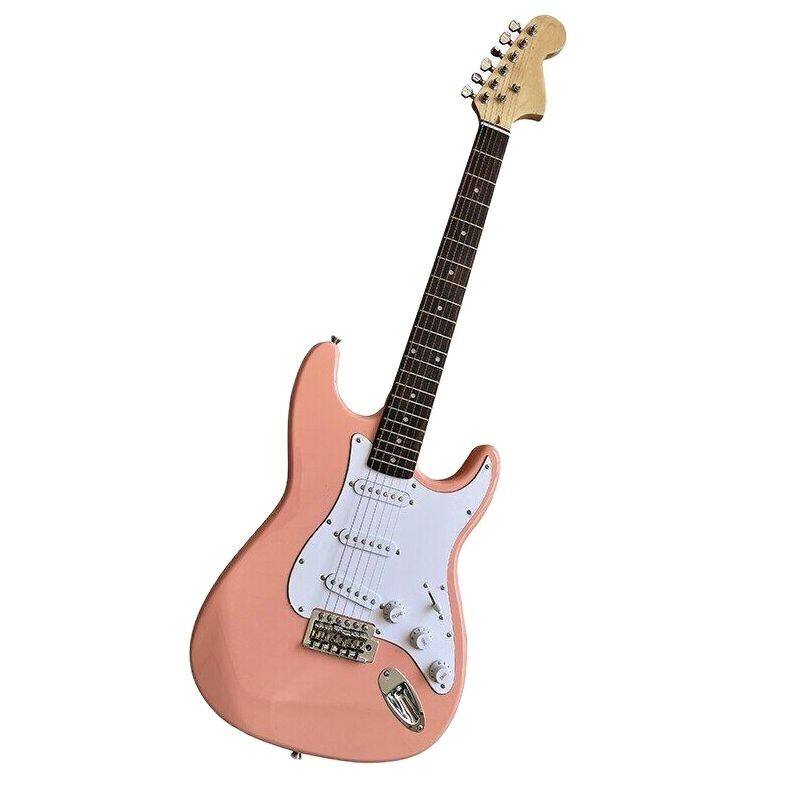Delayed Review of the Boss DD-7 Digital Delay Pedal
As an Amazon Associate, I earn from qualifying purchases. That means I earn commissions from my sponsored links or I make money when readers (you) purchase items through my links. Your purchase allows me to continue working as a stay-at-home dad who moonlights as a farmer and a musician. Needless to say, this post contains affiliate links.
I was sold the first time my friend Jean Paul Verona slammed a Boss Digital Delay pedal in front of me. And he gave it a powerful slam before plugging it back into his pedal board and playing through it like nothing happened.
If I’m not mistaken, it was the Boss DD-2 which was fairly new at that time.
Fast forward to nearly a decade later, I managed to own a few Delay pedals including the DD3 and DD4, an Ibanez Soundtank Delay pedal and Ibanez DE-7. I’ve also owned a few boutique delay pedals from Artec and other brands.
Now forgive me for saying this but I’m not entirely sold on using a delay pedal.
Maybe it’s because I just can’t seem to use it right. All I really use it for is to sustain my notes or prolong the decay.
Still, I understand the appeal of having a delay pedal in your arsenal of guitar pedals.
And I have a friend who’s selling one which I’m really tempted to snap up just so I can have one before it becomes another “rare” pedal that appreciates in value as time flies. If you’re interested, you can find the item here: DeathBloom Audio – Boss Digital Delay (DD-7) for sale.
Why Should You Get a Boss DD-7 Digital Delay Pedal?
Delay pedals are an essential tool in every guitarist’s arsenal. In fact, after a tuner pedal and dirt pedal, the next thing you’d likely see on a guitarist’s board is a delay pedal.
You can create lush soundscapes, exciting rhythmic patterns, and otherworldly ambient textures. Among the plethora of delay pedals available on the market, the Boss DD-7 Digital Delay has carved out a special place for itself, becoming a beloved classic and a staple on countless pedalboards worldwide.
First Impressions
The first thing that strikes you about the Boss DD-7 is its no-nonsense, utilitarian design. Clad in the iconic Boss metal chassis, this pedal is rugged and durable like the rest of the pedals in Boss’ stable. It’s also hefty. At 1 lb (with batteries), this is a heavy pedal.
Another thing to love about the DD-7 is its straightforward control layout, with its familiar knobs and switches. This makes it immediately approachable for both novice and experienced players alike. There’s going to be a learning curve to overcome but it’s not that steep a curve. turn the knobs as much as you like and you’ll eventually find the sound you’re looking for.
Upon plugging in the DD-7, you’re greeted by a warm, organic delay tone that defies the pedal’s digital nature. This analog-like quality is a testament to Boss’s commitment to crafting pedals that prioritize tone above all else.
Boss DD-7 Digital Delay Pedal Technical Specs
At the heart of the Boss DD-7 lies a powerful digital delay engine that offers an impressive range of delay times, from 6.6 milliseconds to a cavernous 5.2 seconds. This versatility allows guitarists to explore everything from subtle slapback echoes to vast, atmospheric repeats that seemingly stretch into infinity.
The pedal’s mode knob is where the real magic happens, offering a variety of delay patterns that can be seamlessly synchronized with the tempo of your music. From classic quarter-note delays to more intricate dotted-eighth and triplet patterns, the DD-7 empowers you to create intricate rhythmic textures that add depth and complexity to your playing.
One of the standout features of the Boss DD-7 is its tap tempo functionality, which allows you to effortlessly sync the delay time to the rhythm of your song with a simple tap of the footswitch. This feature is invaluable for live performances, ensuring that your delays always stay in perfect sync with the rest of the band.
Back then, it seemed like magic for someone like me who just discovered tap tempo. I saved up all my money in the hopes of buying a Boss DD-2 but because of high demand, I waited for over a year before I got the DD-3. In the meantime, I bought an Ibanez delay and a few boutique delay pedals just to sate my hunger for one.
Sound Quality and Versatility
The Boss DD-7 truly shines when it comes to its sound quality and versatility. The pedal’s warm, analog-like tone is a testament to Boss’s commitment to capturing the essence of classic delay sounds while harnessing the power and flexibility of modern digital technology.
Whether you’re looking to create lush, atmospheric pads or rhythmic, staccato echoes, the DD-7 delivers. The pedal’s feedback control allows you to venture into self-oscillating territories, letting you create stunning, otherworldly soundscapes that can elevate your playing to new heights.
One of the standout additions to the DD-7 is the Modulation Delay mode, which infuses your delays with a natural, chorus-like quality, adding an extra dimension of warmth and depth to your sonic palette. Furthermore, the Analog Delay mode pays homage to the iconic BOSS DM-2 analog delay, faithfully modeling its characteristic warmth and character, allowing you to tap into vintage delay sounds.
Additional Control Options
The DD-7 offers unparalleled versatility and control options, ensuring that you can seamlessly integrate it into your rig and performance setup. For hands-free operation, the pedal supports an external footswitch (sold separately), enabling you to control the tap tempo function with the tap of your foot, ensuring that your delays remain perfectly synchronized with the rhythm of your music.
Additionally, the pedal supports an external Expression pedal (also sold separately), granting you real-time control over crucial parameters such as delay time, feedback, and effect level. This level of control empowers you to sculpt and shape your delay textures on the fly, adding an extra layer of dynamism and expressiveness to your playing.
Unleash Your Creativity
One of the most intriguing features of the Boss DD-7 is its Hold mode, which allows you to record up to 40 seconds of input, opening up a world of creative possibilities for “sound on sound” performances. This mode enables you to layer intricate textures and ambient soundscapes, giving you the freedom to craft intricate, multi-dimensional sonic tapestries.
Stereo Output and Panning The DD-7 also boasts a stereo output, enabling you to create stunning spatial audio effects and panning sweeps that can add an immersive, three-dimensional quality to your delays. This feature also allows you to separate the dry and wet signals, which is useful for both recording and live performance applications, granting you greater control over your overall sound.
Conclusion
There’s no question that the Boss DD-7 Digital Delay Pedal has cemented its status as a true classic. It has an exceptional sound quality, is versatile, and has a highly robust construction. Although it has been replaced by the Boss DD-8, the DD-7 can still hold up to a guitarist’s modern demands.
Whether you’re a seasoned pro seeking a reliable delay workhorse or a budding guitarist looking to explore the sonic possibilities of delay effects, the Boss DD-7 is a pedal that will undoubtedly exceed your expectations and become a trusted companion on your musical journey.
Here’s some more info about the Boss DD-7 Digital Delay Pedal
| Nominal Input Level | -20 dBu |
| Input Impedance | 1 M ohm |
| Nominal Output Level | -20 dBu |
| Output Impedance | 1 k ohm |
| Recommended Load Impedance | 10 k ohms or greater |
| Bypass | Buffered bypass |
| Controls | MODE knob D.TIME(Delay Time) knob F.BACK(Feedback) knob E.LEVEL(Effect Level) knob Pedal switch |
| Indicator | CHECK indicator (Used for indication of check battery) |
| Connectors | INPUT-A(MONO)/INPUT-B jack: 1/4-inch phone type OUTPUT-A(MONO)/OUTPUT-B jack: 1/4-inch phone type TEMPO/EXP jack: TRS 1/4-inch phone type DC IN jack |
| Power Supply | Alkaline battery (9 V, 6LR61) AC adaptor (PSA series: sold separately) |
| Current Draw | 55 mA |
| Expected battery life under continuous use | Alkaline: Approx. 6 hours *These figures will vary depending on the actual conditions of use. |
| Accessories | Owner’s manual Leaflet (“USING THE UNIT SAFELY,” “IMPORTANT NOTES,” and “Information”) Dry battery (9 V, 6LR61) |
| Options (sold separately) | AC adaptor: PSA series Footswitch: BOSS FS-5U, FS-7 Expression pedal: Roland EV-5, BOSS FV-500H, FV-500L, EV-30 |
| SIZE AND WEIGHT | |
| Width | 73 mm 2-7/8 inches |
| Depth | 129 mm 5-1/8 inches |
| Height | 59 mm 2-3/8 inches |
| Weight (including battery) | 440 g 1 lb |





